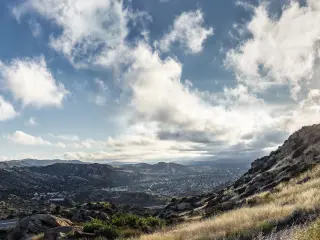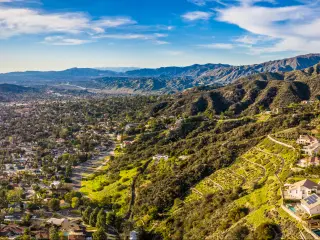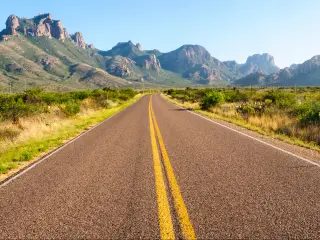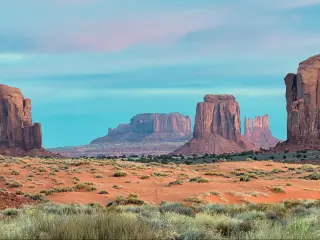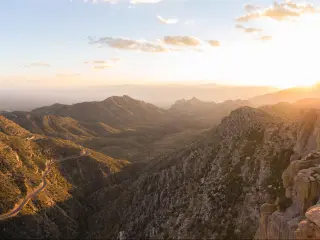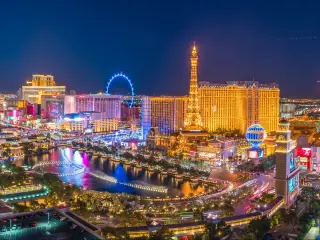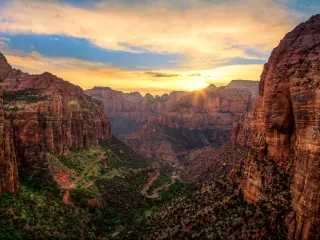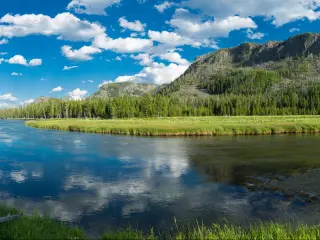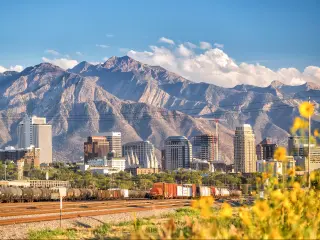Zion and Bryce Canyon in One Day? The Best Way to See These Awesome National Parks
An oasis at the edge of the desert, Zion National Park is famous for its multi-hued sandstone cliffs, dramatic overlooks, and verdant valley floor. Bryce Canyon, meanwhile, boasts the world's largest concentration of hoodoos: a whimsical geological formation that resembles a craggy spire.
A single day spent at Bryce Canyon or Zion National Park is sure to leave a life-long impression. But can you combine both in one ultimate itinerary?
Given that Zion and Bryce Canyon National Parks are situated in the southwest of Utah - only 72 miles apart - many travelers plan on seeing them in one trip. If time is tight, it is possible to see them in a single day, but it is better to take two days.
Read on below to discover the highlights of Zion and Bryce Canyon, the shortest route between them, and the best 1 and 2-day itineraries to follow and make the most of your lightning-quick road trip.
What is the distance between Zion and Bryce Canyon National Parks?
Zion National Park and Bryce Canyon are only 72.4 miles apart, and are both situated in the southwestern corner of Utah. The route between them - primarily along Highway 89 - is pretty simple to navigate, making it ideal for combining a visit to these two Utah gems.
A road trip between Zion and Bryce Canyon is likely to take around 1 hour 20 minutes, depending on traffic. Understandably, there's likely to be more congestion in the summer and during holiday periods, when increased visitors flock to the parks. Even so, the roads are well maintained and you are likely to find the journey relatively straightforward.
It's therefore natural to be tempted to visit both Zion and Bryce Canyon in one day. But is this really a good idea? Read on for our take on the pros and cons of combining the two in a single day's visit.
Can you visit Zion and Bryce Canyon National Parks in a day?
The simple answer is yes. With some planning and a clear itinerary, you can see both Zion and Bryce Canyon in a day.
Both parks are also relatively close to the borders with Arizona and Nevada. So you might consider making this an extra overnight stop as part of a longer trip to Las Vegas or the North Rim of the Grand Canyon.
The Zion Canyon area of Zion National Park is about 50 miles southeast from Bryce Canyon National Park, as the crow flies. The driving distance between the two closest entrances to each park is just 72.4 miles and takes under two hours to drive.
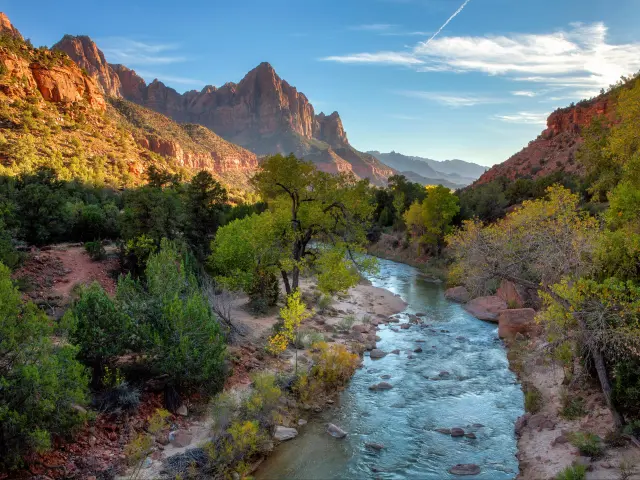
Best one-day itinerary for visiting Zion and Bryce Canyon National Parks
So, you've made it all the way out to southern Utah with one day to see these two fantastic parks. Here's our suggestion for a perfect one-day visit to both parks.
Best 1-day itinerary for visiting Zion and Bryce Canyon National Parks
| Activity | What you'll be doing | |
|---|---|---|
| 1 | Drive to Bryce Canyon National Park | Enter via Bryce Canyon Visitor Center, spend a few minutes here to learn about the hoodoos |
| 2 | Explore | See Fairyland Point and Bryce Point along the Rim Trail |
| 3 | Scenic views | Take in the sights from the Lower Inspiration Point |
| 4 | Hike | Hike part of Hike the Navajo Loop Trail or just the section along “Wall Street” |
| 5 | Lunch | Enjoy a bite either at Bryce Canyon or en route in Mount Carmel |
| 6 | Drive to Zion National Park | Drive the scenic drive along UT-9 (Zion Mount Carmel Scenic Highway) |
| 7 | Arrive at Zion National Park | Enter the national park via East Entrance |
| 8 | Scenic drive | Take shuttle or drive along Zion Canyon Road to see Court of the Patriarchs and Temple of Sinawava |
| 9 | Hike | Take short hike to Emerald Pools and the first mile of the Narrows Trail |
| 10 | Drive back | Drive back to your hotel or home |
Is one day enough to visit Zion and Bryce Canyon National Parks?
While it would be ideal to explore each park over a few days, especially Zion National Park, if you only have a day to see this gorgeous part of Utah, we recommend making that extra effort to see both parks.
Each park has a relatively short, signature, out-and-back road that gives you the best views of prominent geological features and overlooks. Zion Canyon Road, which goes past Angels Landing, the Emerald Pools, and the Court of the Patriarchs, is about 7 miles long.
If you'd like to hike up to Angels Landing, you will need a permit and will need to make a reservation. Check the Zion National Park's website for more details.
Bryce Canyon Road is 18 miles long and goes past the main amphitheater, where the Rim, Navajo, and Sunrise Point trails begin, all the way out to the Rainbow Point Overlook.

Best 2-day itinerary to visit Zion and Bryce Canyon National Parks
If you can stretch your time here to a full 48 hours, you'll still have a jam-packed schedule, but it will allow you more time to relax and absorb the distinctive wonder each park evokes.
Day 1 Itinerary: Zion National Park
| Activity | What you'll be doing | |
|---|---|---|
| 1 | Drive to Zion National Park | Enter via River Entrance (Springdale) |
| 2 | Scenic drive | Take shuttle or drive along Zion Canyon Road to see Court of the Patriarchs |
| 3 | Hike | Hike Angels Landing |
| 4 | Lunch | Enjoy a picnic |
| 5 | Scenic drive | Relax by taking the shuttle all the way to the Temple of Sinawava |
| 6 | Explore | Explore the beginning of the Narrows Trail |
| 7 | Hike | Take a hike to Emerald pools as you make you way back down Zion Canyon Road |
| 8 | Drive to the hotel | Peek in Keyhole Canyon on your way to Mount Carmel along scenic UT-9 |
| 9 | Dinner | Enjoy a meal at the hotel or in a nearby town |
Day 2 Itinerary: Bryce Canyon National Park
| Activity | What you'll be doing | |
|---|---|---|
| 10 | Drive to Bryce Canyon National Park | Enter via Bryce Canyon Visitor Center and learn about the distinctive hoodoos |
| 11 | Scenic view | Admire the stunning views at Sunrise Point |
| 12 | Hike | Hike the Rim Trail |
| 13 | Scenic drive | Drive out to Rainbow Point along UT-63 |
| 14 | Drive back | Drive back to your hotel or home |
Where to stay between Zion and Bryce Canyon National Parks
For this trip, the most convenient and charming place to stay is Mount Carmel. The location can't be beat, and the surrounding area is lined with blushing cliffs.
Mount Carmel is a small town that lies between Zion and Bryce Canyon on Highway 89. It is closer to Zion Canyon, but if someone was coming from the south, it is also on a direct route to Bryce Canyon.
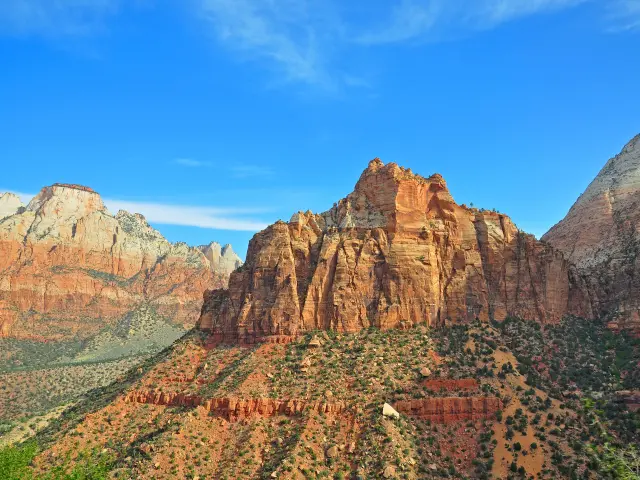
Mount Carmel and Mount Carmel Junction are twin hamlets that were developed when the Zion-Mount Carmel Highway was built, granting access to Zion National Park from US Route 89.
The anchor of Mount Carmel Junction is the Thunderbird Restaurant, which has been serving “ho'made” pies and hearty Americana cuisine since the 1940s. With an extensive menu, including vegan options, this is one of the best lunch or dinner spots around.
To feel a connection with the generations of ranchers who settled in this part of Utah, we recommend staying at Arrowhead Country Inn and Cabins.
While you won't be woken up to tend cattle at 5 am, this property is classified as a farm-stay and there are plenty of furry and feathered friends around the premises.
The cabins are private and cozy, many equipped with their own kitchenette. Every inch of this place oozes rustic charm and a stay here will help make this trip a memorable one.
If you have a little extra time in Mount Carmel, visit the Maynard Dixon Legacy Museum, a cabin and studio space for this early 20th century landscape artist which has also served as a working studio for several contemporary painters.
In such an inspiring landscape, it's no wonder that many artists have felt at home here.
Taking a road trip to Zion and Bryce Canyon National Parks
Here we've outlined two straight-forward routes you can drive to see both Zion and Bryce Canyon National Parks. They start in the two closest cities to this part of Utah: Las Vegas and Salt Lake City.
Zion and Bryce Canyon National Parks are connected via UT-9, US-89, and UT-12. The order of which park you see first on a one-day trip will largely be determined by which direction you're coming from.
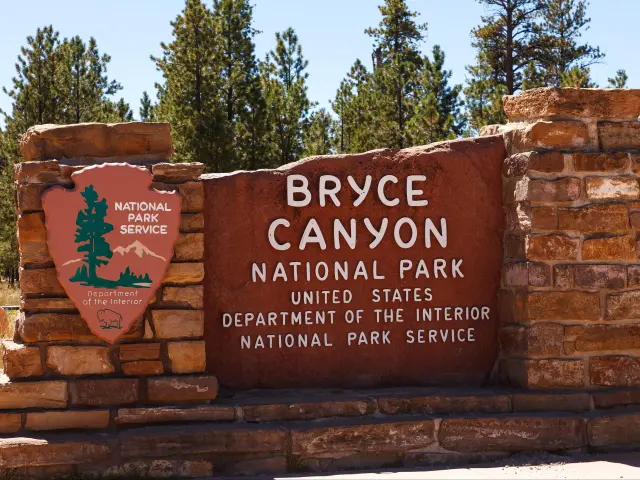
If you're traveling from the north-northeast, from Salt Lake City for example, you'll naturally pass Bryce Canyon first. If you're traveling here from the south-southwest, from cities like Las Vegas or Phoenix, then it makes more sense to stop by Zion National Park first.
The best Zion National Park entrance to use when traveling between the parks is the East Entrance on UT-9. Bryce Canyon is a smaller national park and only has one entrance on Utah Route 63 via UT-12.
Given the windy layout of UT-9 and UT-12, you should leave about two hours to drive between the parks, without any stops.
The first leg of the journey from Zion to Bryce Canyon takes you through the scenic Zion-Mt. Carmel Highway on UT-9, so there are quite a few places that might inspire you to slow down and take in the phenomenal views.
Keeping this and a potential stop in Mount Carmel in mind, a more realistic drive time would be closer to three hours.
| Starting point | Destination | Distance | Driving Time |
|---|---|---|---|
| Las Vegas via Zion National Park | Bryce Canyon National Park | 245 miles | 4 hours 30 minutes |
| Salt Lake City via Bryce Canyon National Park | Zion National Park | 345 miles | 5 hours 30 minutes |
Driving from Las Vegas to Zion and Bryce Canyon National Parks
Las Vegas is a common place to start a road trip to Zion and Bryce Canyon National Parks. A route starting in Las Vegas and going to Bryce Canyon via Zion is 245 miles long and would take 4 hours 30 minutes to drive.
For the first leg of the journey, take Interstate 15 (I-15) North for 127 miles to Washington, UT. From there, exit on to UT-9 passing through Hurricane, UT and Springdale, UT to the River Entrance of Zion National Park.
After exploring Zion, get back on UT-9, heading through the East Entrance along the scenic stretch of the Zion-Mount Carmel Highway. This includes a particularly dramatic section through the mile-long Zion-Mount Carmel Tunnel. After you reach Mount Carmel Junction, take US-89 North to UT-63, via UT-12, and the entrance to Bryce Canyon National Park.
READ MORE - Road trip from Las Vegas to Zion National Park
Things to see on the way to Zion and Bryce Canyon National Parks from Las Vegas
This route passes through an expansive stretch of the Southwestern desert, with a wide horizon and distant plateaus. Along the way, consider stopping at these places to add even more adventure to your trip:
- Nellis Dunes - Nellis Dunes is a popular destination for off-road enthusiasts and adventure seekers. Located near Las Vegas, it offers miles of scenic trails for dirt biking, ATV riding, and other off-road activities.
- Moapa Valley National Wildlife Refuge - Moapa Valley National Wildlife Refuge is a haven for wildlife and bird enthusiasts, with over 100 different species of birds and other animals. This is a must-visit for fishing and wildlife enthusiasts.
- Mesquite - Mesquite is a charming city located in the Virgin River Valley of southeastern Nevada. This is the perfect location to enjoy golfing, hiking, and other outdoor activities.
- Virgin River Gorge - The Virgin River Gorge is a scenic canyon that stretches from the Arizona-Utah border to the Virgin River in Nevada. It is a popular destination for hiking, camping, and rock climbing, with stunning views of towering cliffs and rugged terrain.
- Elephant Arch - Elephant Arch is a natural sandstone arch located in the Grand Staircase-Escalante National Monument in southern Utah. The arch is a popular destination for hikers and nature enthusiasts.
- St. George - St. George is a vibrant city located in southwestern Utah, known for its stunning red rock scenery, golf courses, and outdoor activities.
- Red Cliffs National Conservation Area - Red Cliffs National Conservation Area is a protected area located in southwestern Utah, known for its unique red rock formations and desert ecosystem. You can hike even here if you have some extra time.
- Springdale - Located at the entrance to Zion National Park in southern Utah, this city is the perfect place to stop if you are feeling adventurous. You will find plenty of outdoor activities here, such as hiking and rock climbing.
- Glendale - Glendale is a small town located in southern Utah, known for its stunning scenery and outdoor activities. This is also the perfect gateway to our two national parks, Zion and Bryce Canyon.
- Red Canyon - Red Canyon is a scenic area located in southern Utah, known for its unique geology and red rock formations that it is so famous for.
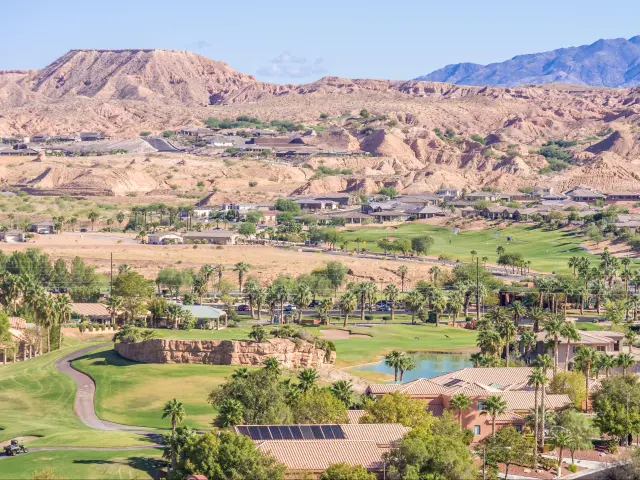
Driving from Salt Lake City to Bryce Canyon and Zion National Parks
A slightly longer, but just as common, route for a road trip to Bryce Canyon and Zion National Parks starts in Salt Lake City. This route is 345 miles long and takes about 5 hours and 30 minutes to drive, stopping at Bryce Canyon before moving on to Zion.
This route also starts on I-15, but heading south. Stay on the interstate for the first 216 miles of the trip and then take the Utah Route 20 turnoff, which will take you over to US-89. Follow this south for just over 50 miles, before taking a left onto UT-12.
This road will take you past Red Canyon to UT-63 and Bryce Canyon National Park. After seeing the sights here, navigate back to US-89 and take it south to UT-9 in Mount Caramel Junction. Follow this awe-inspiring stretch of road west, through the East Entrance to Zion and the Zion-Mount Carmel Tunnel.
If you wanted to get back to Salt Lake City a slightly different way, you could take UT-9 West until it intersects with I-15 and then take that all the way north back to Salt Lake City. This stretch of the trip isn't included in the mileage given above.
READ MORE - Road trip from Salt Lake City to Bryce Canyon
Things to see on the way to Zion and Bryce Canyon National Parks from Salt Lake City
This exciting Salt Lake City Route takes you from north to south across the whole, stunning state of Utah. Filled with high altitude deserts and snow-capped mountains, this route is a great prelude to the dazzling landscapes of Bryce Canyon and Zion.
Even though this is a short trip, consider spending a few moments to appreciate a few of these stops along the way:
- Provo - Provo is a vibrant city located in central Utah, known for its beautiful scenery and outdoor activities. Here, you can explore nearby attractions such as the Provo Canyon, Brigham Young University, or the Timpanogos Cave National Monument.
- Yuba State Park - Yuba State Park is a popular destination for outdoor enthusiasts, located in central Utah. If you like boating or fishing, this is the perfect place to make a stop as it has a reservoir where you can enjoy water activities.
- Dixie National Forest - The stunning Dixie National Forest is known for its breathtaking scenery and outdoor activities such as hiking, camping, and wildlife viewing.
- Panguitch - Panguitch is a charming city located in southwestern Utah, known for its scenic beauty and outdoor activities. Visitors can explore nearby attractions such as Bryce Canyon National Park or the Red Canyon, or enjoy hiking, fishing, and other outdoor adventures.
- Mount Carmel Junction - Mount Carmel Junction is a small town located near the entrance to Zion National Park in southern Utah. You can also explore Lake Powell here and have a meal in between visiting the national parks.
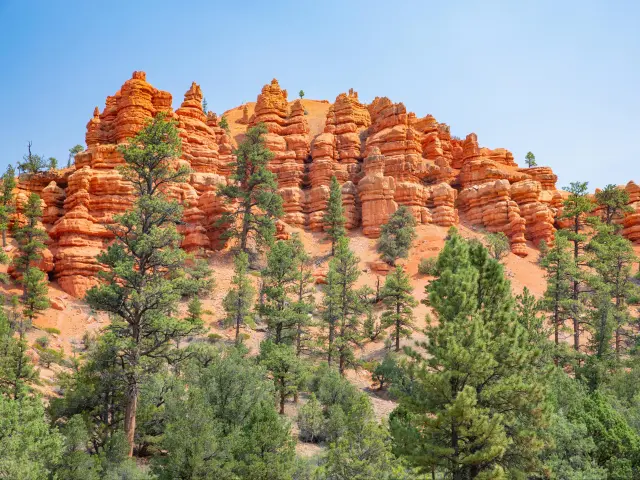
Best time to visit Zion and Bryce Canyon National Parks
Both of these magnificent national parks are open to visitors year-round. Bryce Canyon sits at a higher overall elevation, so will be notably cooler, especially in the winter. If coming for a single day, try to aim for the shoulder seasons so you can make the most of longer daylight and mild weather to enjoy each park to the fullest.
The isolation and elevation of Bryce Canyon make it one of the best places for amateur star gazing in the continental U.S. In case you were keen to see a comet, planetary conjunction, or some other stellar phenomena, plan your trip to coincide with it so that you'll have one of the best views you can get.
With warm weather that makes splashing in the waters of the Virgin River all the more refreshing, summer is the most popular season for Zion as well as for Bryce Canyon.
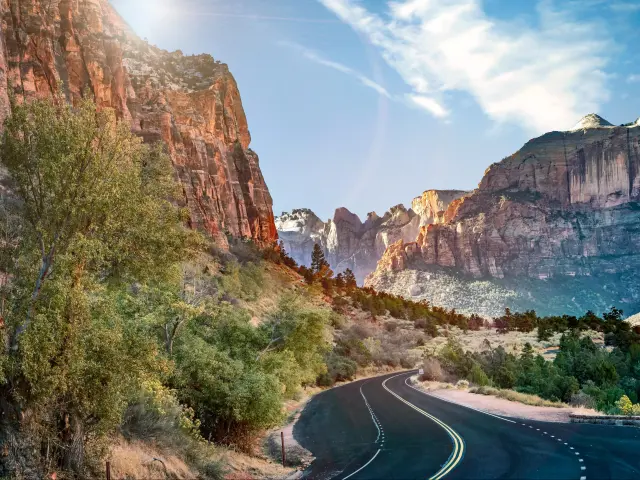
The numbers of visitors at both parks, but especially Zion, have led to the introduction of a shuttle service for the parks' most popular routes. Even the parking for said shuttle can become competitive.
All this to say: during a short trip when time is of the essence, we recommend avoiding the peak summer months if your schedule allows for it.
During the winter both parks regularly have freezing nighttime temperatures, but the winter weather is more pronounced at Bryce Canyon.
The main scenic route through this park, UT-63, is closed past the 3-mile post so many sweeping viewpoints aren't reachable by car in the winter. Additionally, the park's most popular Rim Trail faces occasional winter closures due to ice.
Zion Canyon only ever sees snow on its mountain peaks and cliffs, rather than on the valley floor, so the winter is relatively mild here. This is also the only season when you can drive your own car on the picturesque Zion Canyon Road.
The biggest hang-up about making this drive during the winter is the shorter days and sunset between 5 and 5:30pm. In addition to missing the fantastic scenery between the parks, neither UT-9 nor UT-12 has street lighting, making driving at night slightly hazardous.
If this wasn't reason enough, Utah is an open range state. Cattle are free to roam across the highways and almost impossible to see at night.
With temperatures creeping up and longer days, spring is a choice season to visit this pair of parks. In early spring the higher altitudes have yet to thaw, but by May you can plan on hiking with just a light sweater for the mornings and evenings.
The spring rains also bring a fresh burst of life to both parks. In Zion there are dozens of bird species and trees that take on a whole new vibrancy and Bryce Canyon gets filled with dabs of colorful wildflowers.
Early fall, around September, is another top time to visit Zion and Bryce Canyon. The weather is still warm, but the number of visitors has dwindled. With many deciduous trees, you might also catch a glimpse of amber and crimson in the floor of Zion Canyon.
Springdale, the largest town near the southern entrance of Zion, has begun hosting the Zion Canyon Music Festival every September which is worth checking out if you plan on making a fall trip.
No matter when you take this trip, efficient planning is the key to making the most out of a short trip to two of Utah's most mesmerizing national parks. Hopefully this article has been a helpful first step!

